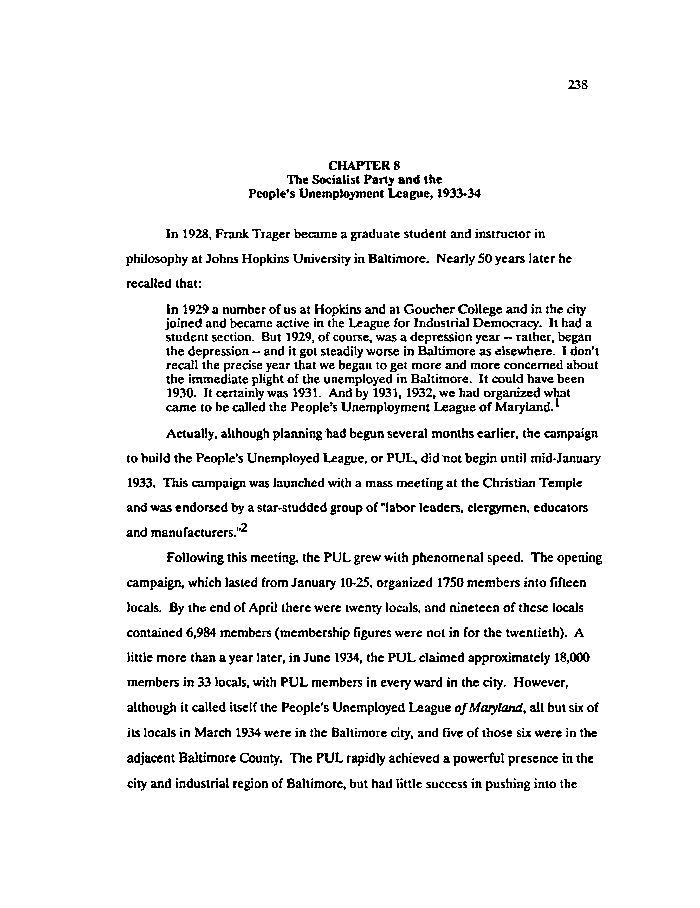|
238
CHAPTERS
The Socialist Party and the
People's Unemployment League, 1933-34
In 1928, Frank Trager became a graduate student and instructor in
philosophy at Johns Hopkins University in Baltimore. Nearly 50 years later he
recalled that:
In 1929 a number of us at Hopkins and at Goucher College and in the city
joined and became active in the League for Industrial Democracy. It had a
student section. But 1929, of course, was a depression year — rather, began
the depression - and it got steadily worse in Baltimore as elsewhere. I don't
recall the precise year that we began to get more and more concerned about
the immediate plight of the unemployed in Baltimore. It could have been
1930. It certainly was 1931. And by 1931,1932, we had organized what
came to be called the People's Unemployment League of Maryland.
Actually, although planning had begun several months earlier, the campaign
to build the People's Unemployed League, or PUL, did hot begin until mid-January
1933. This campaign was launched with a mass meeting at the Christian Temple
and was endorsed by a star-studded group of "labor leaders, clergymen, educators
•->
and manufacturers.
Following this meeting, the PUL grew with phenomenal speed. The opening
campaign, which lasted from January 10-25, organized 1750 members into fifteen
locals. By the end of April there were twenty locals, and nineteen of these locals
contained 6,984 members (membership figures were not in for the twentieth). A
little more than a year later, in June 1934, the PUL claimed approximately 18,000
members in 33 locals, with PUL members in every ward in the city. However,
although it called itself the People's Unemployed League of Maryland, all but six of
its locals in March 1934 were in the Baltimore city, and five of those six were in the
adjacent Baltimore County. The PUL rapidly achieved a powerful presence in the
city and industrial region of Baltimore, but had little success in pushing into the
|

